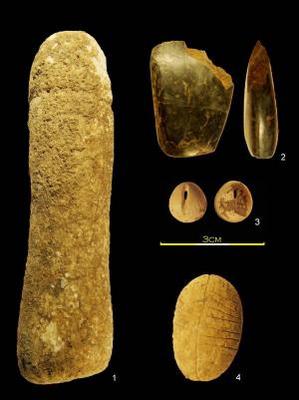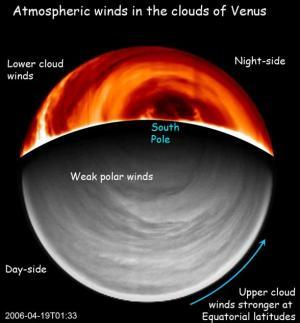Hebrew University excavations in the north of Israel have revealed a prehistoric funerary precinct dating back to 6,750-8,500 BCE.

|
| ©Professor Nigel Goring-Morris
|
| (1) Phallic figurine, (2) Small symbolic axe made with serpentine, (3) Shell pendants, (4) Engraved token
|
The precinct, a massive walled enclosure measuring 10 meters by at least 20 meters, was discovered at excavations being undertaken at Kfar HaHoresh. The Pre-Pottery Neolithic B site in the Nazareth hills of the lower Galilee is interpreted as having been a regional funerary and cult center for nearby lowland villages.
Prof. Nigel Goring-Morris of the Hebrew University's Institute of Archaeology, who is leading the excavations, says that the precinct is just one of the many finds discovered at the site this year - including remains of a fully-articulated, but tightly contracted 40 year old adult male.
Accompanying grave goods include a sickle blade and a sea shell, while a concentration of some 60 other shells were found nearby. The sea shells provide evidence for extensive exchange networks from the Mediterranean and Red Seas. Symbolic items include small plain or incised tokens. An entire herd of cattle was also found buried nearby.
While fertility symbols during this period are often associated with female imagery, at Kfar HaHoresh only phallic figurines have been found to date, including one placed as a foundation deposit in the wall of the precinct.



